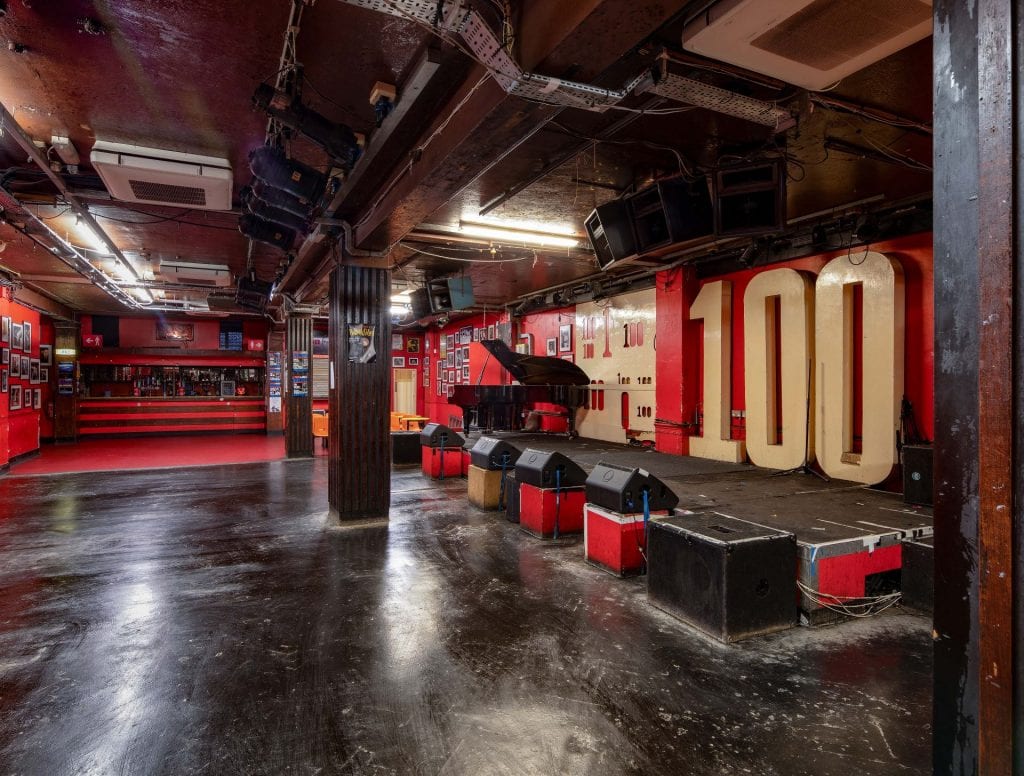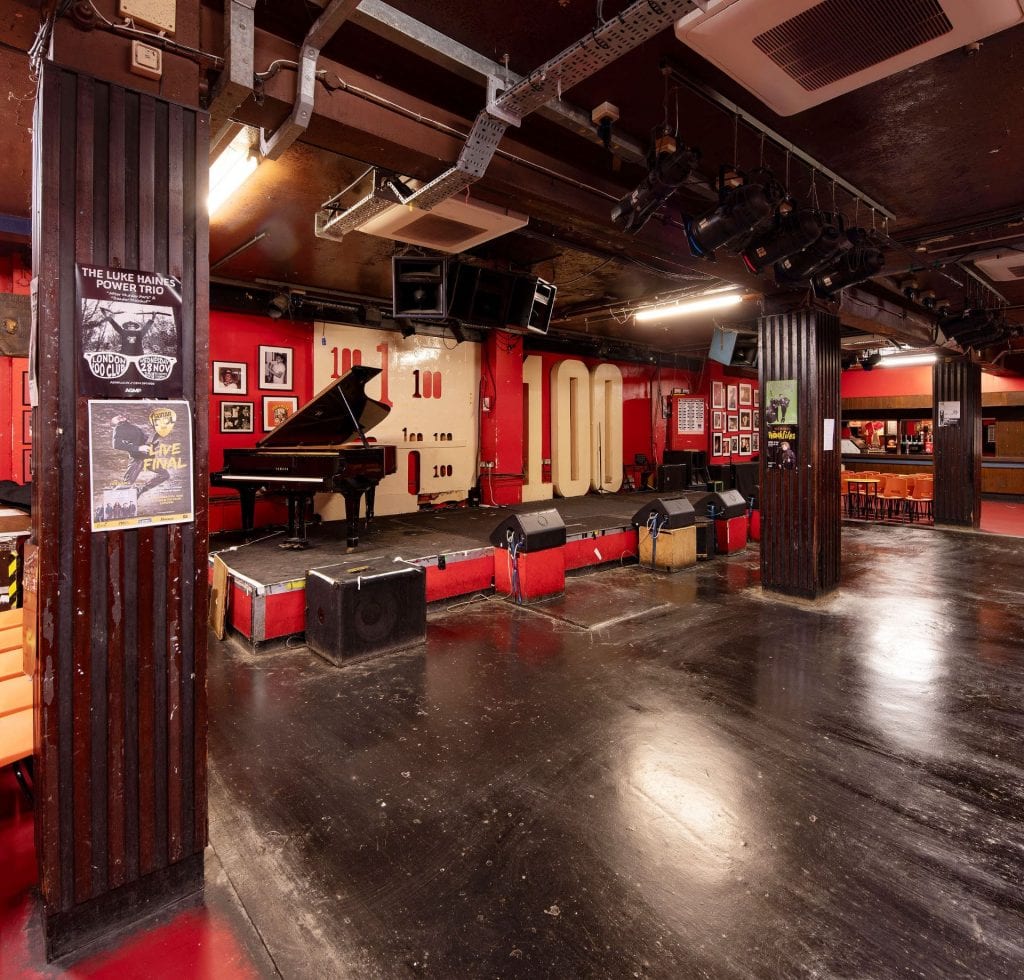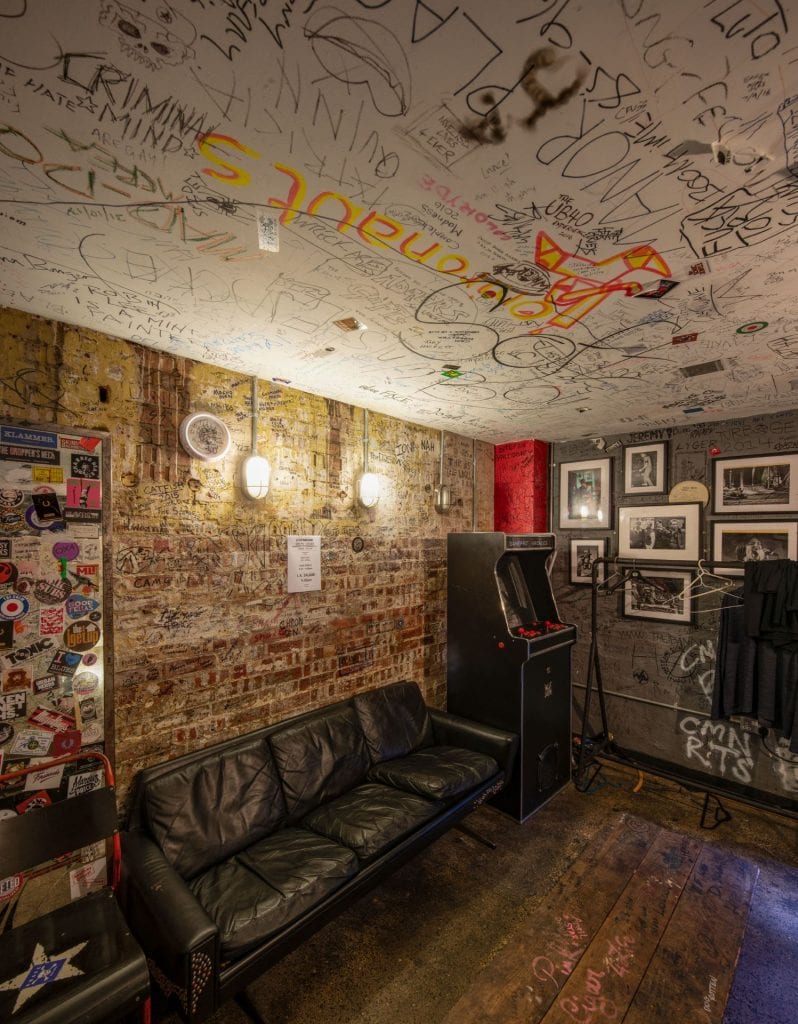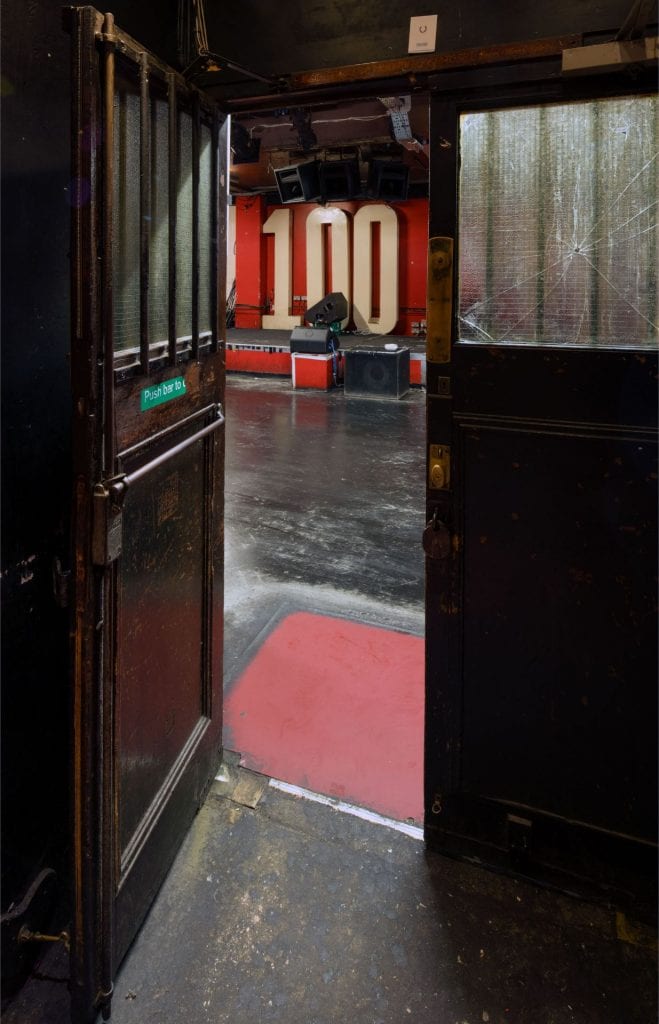The 100 Club, 100 Oxford Street
By the Survey of London, on 22 March 2019
With the Survey of London’s Oxford Street volume currently in preparation, today’s blog post looks at one of the street’s hidden musical treasures – the 100 Club, at 100 Oxford Street.

The 100 Club (© Historic England, Chris Redgrave)
At a time when the capital’s increasing gentrification and corporatisation is gradually erasing anything of vitality or individuality from the city’s streets, the 100 Club stands out as a rare survivor of the type of raw and intimate live venue that once made London the world centre of popular music culture.

The 100 Club (© Historic England, Chris Redgrave)
Hidden away down a simple staircase in the dark basement of a 1920s office block, the 100 Club epitomises the type of gritty trad jazz and folk ‘cellars’ that rose to prominence in post-war London. But its origins go back further, to 1942, when a Sunday night swing club, Feldman’s Swing Club, opened in a basement restaurant called Macks at 100 Oxford Street. By 1949 the club had become the Jazz Club, or London Jazz Club, and by 1951 the Humphrey Lyttelton Club. Roger Horton, father of the current owner Jeff Horton, took over the premises in 1964 and renamed it, presumably after its address – though legend has it that the name was also a sly reference to the club’s small capacity – though today that is now 350.

The main staircase at the 100 Club (© Historic England, Chris Redgrave)
All the factors that might appal a modern concert-goer are what make the place special. It can be dark, cramped, hot, noisy, and teeming with people – ‘a proper cave’, as the music citric Geoffrey Smith once described it [1] – but nearly always overflowing with the raucous atmosphere of audience and musicians having a good time. That atmosphere has lasted through the jazz and blues nights of the fifties and sixties, the British ‘beat’ explosion of the early to mid sixties, punk and funk in the seventies and eighties, and Britpop in the 1990s.

The 100 Club (© Historic England, Chris Redgrave)
The list of now world-famous names who have appeared on the 100 Club’s tiny stage is astonishing, from Louis Armstrong, Humphrey Lyttelton and Stan Tracey, to Muddy Waters, Bo Diddley, Jimi Hendrix, the Rolling Stones, the Kinks and Bob Dylan, and in more recent years Blur and Oasis. But emphasising this glittering roll-call partly misses the point. The 100 Club’s durability is due in large part to its refusal to confine itself to one particular brand of music, to its championing of the up-and-coming, the new and the unfamiliar. The now legendary ‘100 Club Punk Festival’ held there by Malcolm McLaren in the summer of 1976, which heralded the appearance of a new, exhilarating, anti-establishment force in music and popular culture, expressed this best, when an impromptu group of ‘musicians’ that would later evolve into Siouxsie and the Banshees took to the stage to open the festival, for what was their first ever live performance.

The dressing room at the 100 Club (© Historic England, Chris Redgrave)
Despite its undoubted cultural significance and the dearth of live music venues in twenty-first century London, the 100 Club was by 2010 struggling with debt and facing closure. Rising business rates, alcohol duty increases and licensing restrictions had tipped the business into debt. A partnership with Converse footwear (now finished) and a high-profile publicity and fund-raising campaign, including a performance by Paul McCartney, saved the 100 Club then. But today its future is still far from secure. Further rises in rents and rates, and especially the Conservative government’s iniquitous attitude to business rates, which were raised again dramatically in 2017, have once again left the club’s owners faced with debt and ruin. The recent business rates revaluation takes no account of the size of a business or its profit margins, only its property. The effects can be seen all across London’s high streets today, where many cafés, bars, live music venues and other small local businesses have been forced to close.

The 100 Club (© Historic England, Chris Redgrave)
Miles Kingston once described the 100 Club as a ‘vast underground barn … where over the years the hand of the interior decorator has not set foot, a big functional oblong which, if 1950s jazz clubs ever get the Betjeman seal of approval, will have a preservation order slapped on it as a totally unspoilt specimen’. [2] That was in 1980 and little has changed at 100 Oxford Street since then, but that ‘preservation order’ has still to come. Perhaps it is time for a rethink?
Notes
[1] Country Life, 26 April 1979, p. 1282.
[2] Punch Historical Archive, 10 September 1980, p. 392.
 Close
Close


